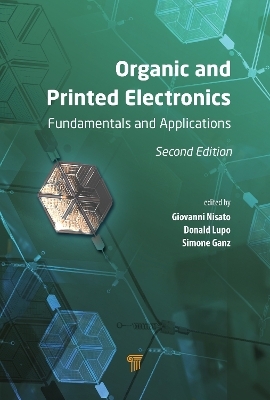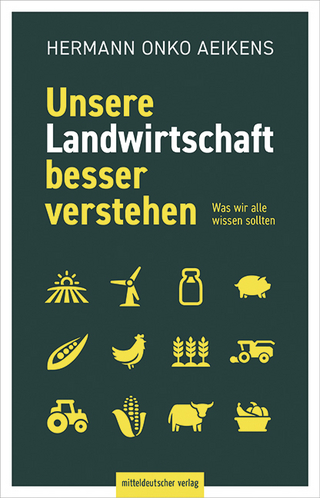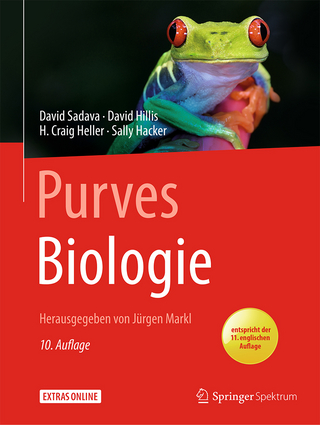
Organic and Printed Electronics
Jenny Stanford Publishing (Verlag)
978-981-5129-14-4 (ISBN)
Giovanni Nisato is an independent consultant, enabling companies’ innovation strategies. After his PhD in physics and postdoctoral work in nanomaterials, he started his journey in flexible and printed electronics in 1999 at the Philips Research Labs in the Netherlands. He subsequently joined the Swiss Center for Micro Technology and Electronics (CSEM) in 2009, leading and managing their OPE program as well as initiating and managing EU-level research projects. His professional background spans the display, photovoltaics, and healthcare domains. As a member of the Organic and Electronics Association (OE-A), he contributed actively to the roadmapping and encapsulation working groups and served on its board. He is co-author of over 30 peer reviewed publications and 35 patent applications. Donald Lupo joined the Department of Electronics and Communications Engineering at Tampere University of Technology (now Tampere University, Faculty of Information Technology and Communication Sciences) as professor for electronic materials in 2010 after a diverse career in industrial research and development in functional materials for photonics and electronics. He obtained his PhD in physical chemistry at Indiana University-Bloomington, USA, in 1984 and spent the next 24 years working in chemical, electronic, and display industries and as an independent consultant, working for and with companies such as Hoechst AG, Sony Europe, NTera, Samsung, UPM Kymmene, and Merck. During his industrial career, he led ground-breaking work in organic nonlinear optics, polymer LEDs, solid-state dye solar cells and paper-like displays. He has authored over 100 journal articles and conference proceedings and is inventor in over 40 patents and applications. He now heads the Laboratory for Future Electronics at Tampere University, serves as an external expert in the OLED and printed electronics fields for the European Commission, is a core member of the Organic Electronics Association roadmap team, was speaker of the OE-A Education group in 2010–2014, and has served on the technical advisory boards of Thin Film Electronics AB, Nano Eprint Ltd., Centre for Process Innovation (CPI), the EPSRC Centre for Innovative Manufacturing in Large Area Electronics (CIMLAE), and the Centre for Advanced Manufacturing in Renewable Energy (CAMREG). Simone Rudolf, née Ganz, is a development engineer at Heraeus Noblelight GmbH, Germany, and works on process and application development for infrared heating processes. She studied chemistry and management at Ulm University, Germany, and completed her Diplom (master’s equivalent) in battery technologies at VARTA Microbattery GmbH, Germany. Subsequently, she joined the Functional Printing Group at the Institute of Printing Science and Technology, Technische Universität Darmstadt, Germany, where she obtained her PhD. Her research was focused on printing techniques, especially gravure and flexography, for organic field-effect transistors. As former co-spokesperson of the OEA’s Working Group Education, she furthered academic education within the field of organic electronics.
1. Organic and Printed Electronics: An Introduction 2. Organic Semiconducting Materials 3. Printing and Processing Techniques 4. Characterization Techniques for Printed Electronics 5. Organic Field-Effect Transistors 6. The Basics of Organic Light-Emitting Diodes 7. Organic and Perovskite Solar Cells 8. Printable Power Storage: Batteries and Supercapacitors 9. Printed Sensors and Sensing Systems 10. Encapsulation of Organic Electronics 11. Hybrid Printed Electronics 12. Smart Textiles 13. Circularity and Environmental Sustainability of Organic and Printed Electronics 14. Innovation Management on Organic and Printed Electronics 15. Roadmapping: General Principles and Application to Organic and Printed Electronics 16. Experiments
| Erscheinungsdatum | 20.04.2024 |
|---|---|
| Zusatzinfo | 23 Tables, black and white; 89 Illustrations, color; 209 Illustrations, black and white |
| Sprache | englisch |
| Maße | 152 x 229 mm |
| Gewicht | 1592 g |
| Themenwelt | Naturwissenschaften ► Biologie |
| Technik ► Elektrotechnik / Energietechnik | |
| Technik ► Umwelttechnik / Biotechnologie | |
| ISBN-10 | 981-5129-14-7 / 9815129147 |
| ISBN-13 | 978-981-5129-14-4 / 9789815129144 |
| Zustand | Neuware |
| Haben Sie eine Frage zum Produkt? |
aus dem Bereich


